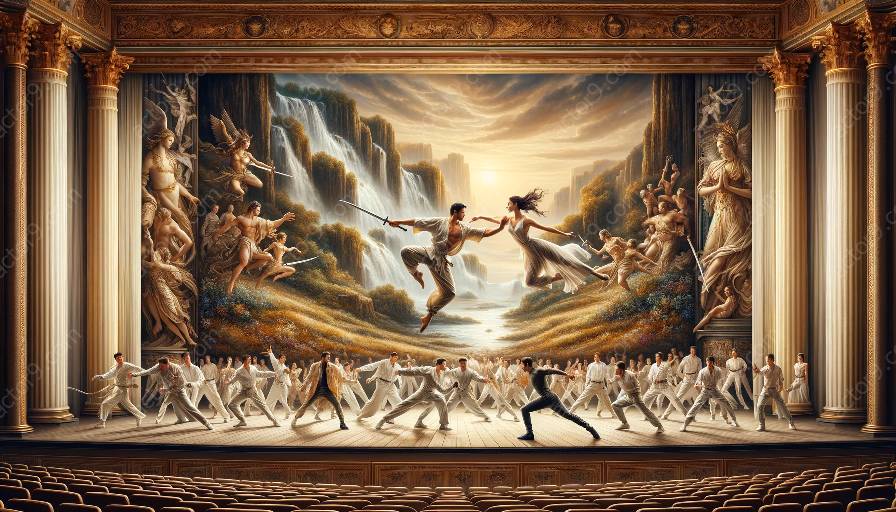Stage combat is a crucial component of acting and theater, providing performers with the skills to convincingly and safely portray combat situations on stage. This topic cluster will delve into the techniques, training, and safety measures involved in the art of stage combat, exploring its significance in the performing arts.
Understanding Stage Combat
Stage combat refers to the choreographed portrayal of combat or physical conflict in a theatrical performance. It involves a range of techniques and skills that allow actors to create the illusion of physical confrontation while ensuring the safety of themselves and their fellow performers.
Stage combat is an integral part of many theatrical productions, adding excitement, tension, and spectacle to performances. Whether it's a swashbuckling sword fight, a dramatic confrontation, or a high-energy battle scene, stage combat requires precision, timing, and realism to captivate audiences and enhance the storytelling.
Techniques and Training
Mastering the art of stage combat requires dedicated training and a deep understanding of various combat techniques. Actors undergo rigorous physical and mental preparation to execute staged fights effectively and convincingly.
Combat techniques encompass a wide range of disciplines, including unarmed combat, swordplay, knife fighting, and martial arts. Actors often train under the guidance of professional fight directors or stage combat instructors who teach them the specific movements and sequences required for different types of combat scenes.
Furthermore, actors learn fight choreography, which involves carefully planning and rehearsing combat sequences to ensure the safety of all performers involved. This process requires collaboration, precision, and attention to detail, as actors work together to create dynamic and realistic fight scenes while minimizing the risk of injury.
Safety Measures and Considerations
As with any physical performance, safety is of paramount importance in stage combat. Actors must adhere to strict safety protocols and guidelines to mitigate the risk of accidents or injuries during combat scenes.
Weapon safety is a crucial aspect of stage combat, particularly when utilizing prop weapons such as swords, daggers, or firearms. Actors receive specialized training in handling and using these props safely, often working closely with weapon experts to ensure proper technique and handling.
Additionally, performers are taught combat safety techniques to simulate physical contact and strikes without causing harm. These techniques involve controlled movements, precise distancing, and effective communication between actors to execute combat sequences convincingly while minimizing the risk of injury.
Significance in Acting and Theater
The art of stage combat holds significant relevance in the world of acting and theater, enriching performances and storytelling in various ways. Through skillful execution of combat scenes, actors can convey tension, emotion, and character dynamics, contributing to the overall dramatic impact of a production.
Moreover, stage combat showcases the dedication and versatility of actors, allowing them to demonstrate their physical prowess and acting abilities. It also provides audiences with thrilling and immersive experiences, heightening the theatrical spectacle and engaging their senses through dynamic and realistic portrayals of conflict and confrontation.
In Conclusion
Stage combat is an essential element of the performing arts, blending athleticism, artistry, and safety to bring compelling combat sequences to life on stage. By mastering the techniques, training diligently, and prioritizing safety, actors can elevate their performances and captivate audiences through the artful portrayal of physical conflict.















































